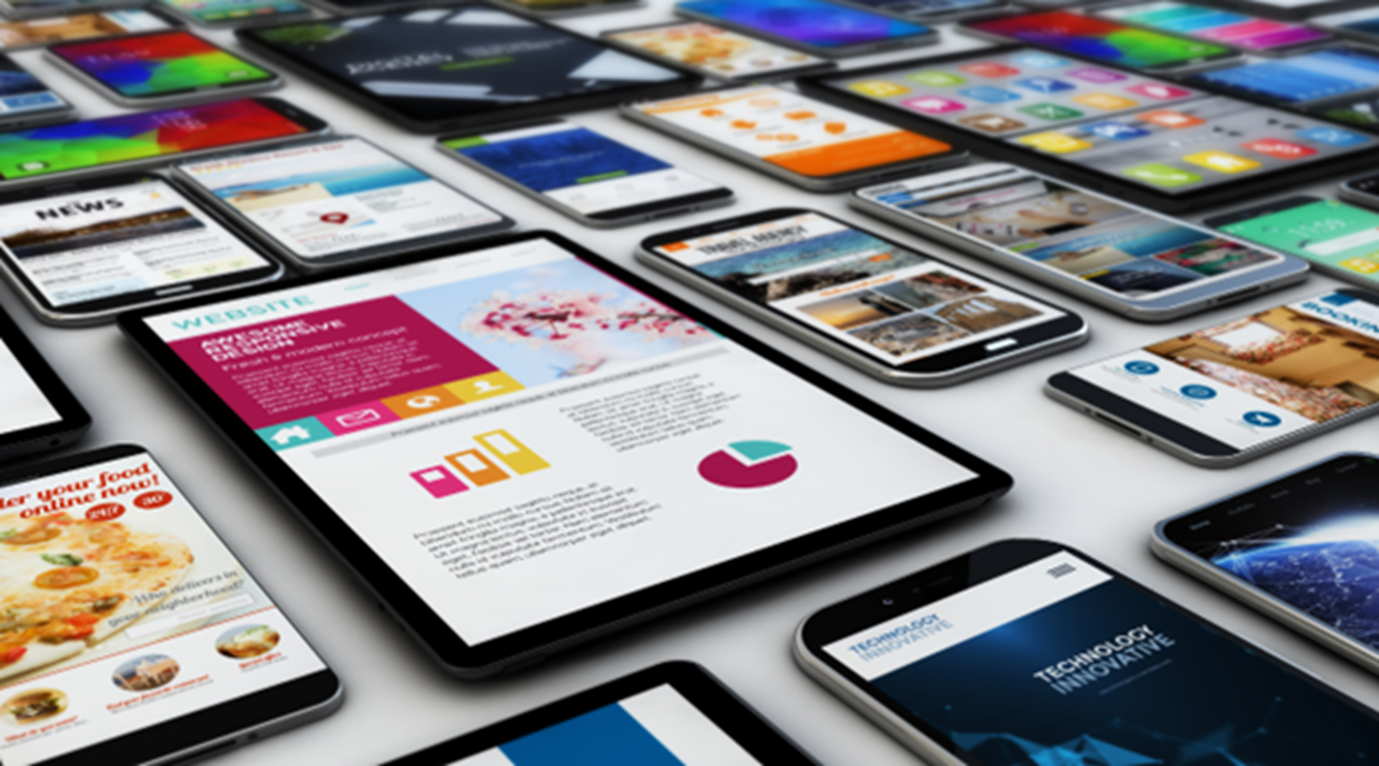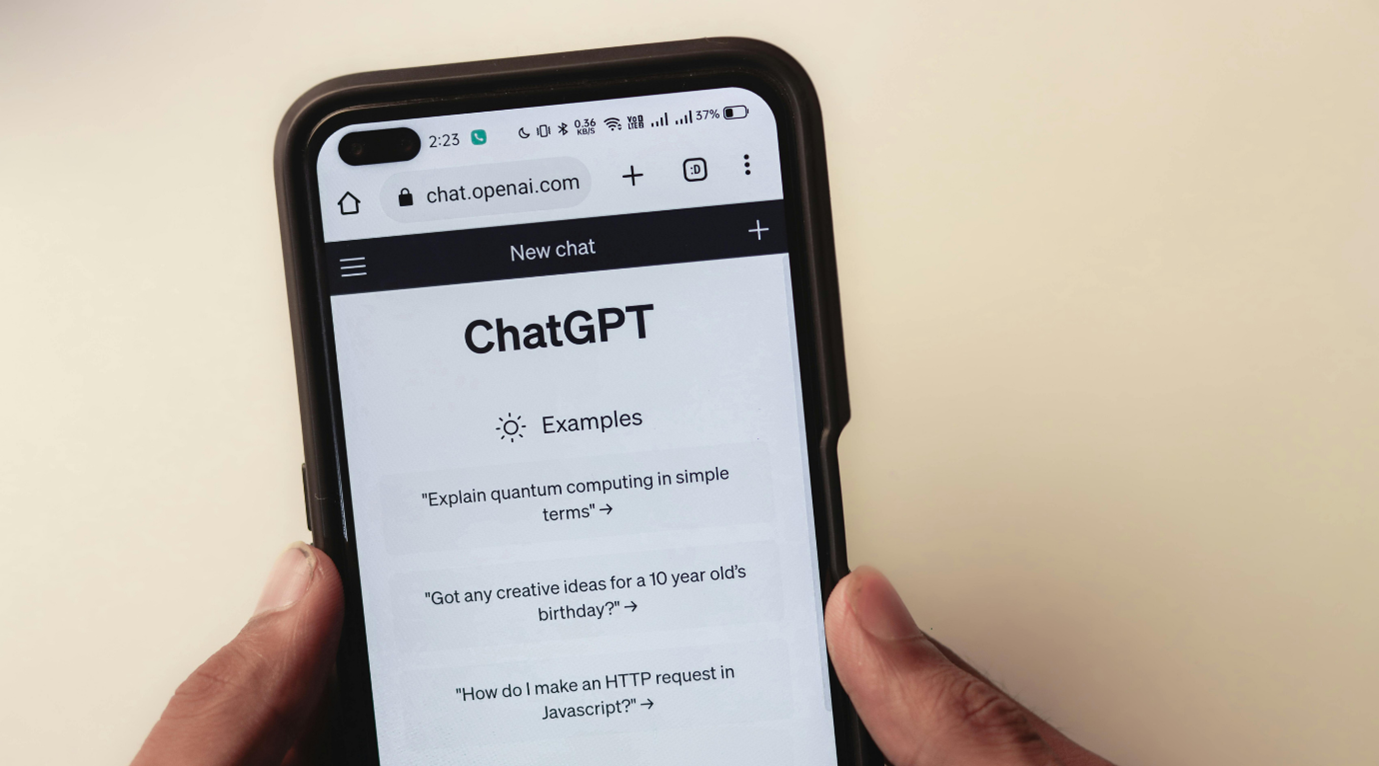Introduction
In today’s hyper-connected world, mobile apps have become an indispensable part of our daily lives. From ordering food and hailing rides to managing finances and staying connected with loved ones, mobile apps seamlessly integrate into our routines and fulfill a vast array of needs.
If you have a brilliant idea for a mobile app, but feel overwhelmed by the app development process, this blog post is for you. Here, we’ll embark on a comprehensive journey through the strategic phases of how to build mobile applications, equipping you with the knowledge and tools to transform your concept into a thriving mobile app.
This guide is designed for aspiring entrepreneurs, budding developers, and anyone interested in understanding the intricacies of successful mobile app creation. By delving into the various stages of mobile app development, from ideation to launch and beyond, you’ll gain valuable insights that will empower you to navigate this exciting yet challenging domain.
From Brainstorming to Brilliance: Ideation and Conceptualization
The cornerstone of any successful mobile app is a strong, well-defined concept. This initial stage lays the foundation for everything that follows, so it’s crucial to invest time and effort in crafting a unique and valuable app idea. Here are some key considerations to guide you through the ideation and conceptualization phase:
- Identifying a Problem or Filling a Gap: Successful apps solve a specific problem or address an unmet need in the market. Start by brainstorming challenges you encounter in your daily life or areas where existing apps fall short. Is there a task that could be simplified through an app? Is there a particular niche where a dedicated app could provide immense value?
- Brainstorming Techniques: Don’t be afraid to unleash your creativity! Mind mapping, conducting user interviews, and researching existing apps in your target category are all effective ways to generate a plethora of ideas.
- Validating Your App Concept: Once you have a promising concept, the next step is to validate its viability. Conducting market research to gauge user interest and analyzing competitor apps to identify potential differentiators are essential steps in validating your app idea. Remember, an app idea is only as good as its market fit.
Checklist for Validating Your Mobile App Idea
- Is there a clearly defined target audience for your app?
- Does your app solve a genuine problem or offer a unique value proposition?
- Have you researched the competitive landscape and identified potential opportunities for differentiation?
- Is there sufficient market demand to support your app?
- Do you have a clear plan for marketing and monetizing your app?
By following these steps and meticulously validating your concept, you’ll increase your chances of developing a mobile app that resonates with users and achieves long-term success. In the next section, we’ll delve deeper into market research and competitor analysis, equipping you with the tools to make informed decisions about your mobile app.
Conducting Market Research and Understanding Your Competitive Landscape
With a well-defined app concept in hand, it’s time to delve into the world of market research and competitor analysis. This crucial phase allows you to gather valuable insights into your target audience, understand existing solutions in the market, and identify opportunities to differentiate your mobile app.
Market Research: Unveiling User Needs and Market Trends
Thorough market research is the bedrock of successful mobile app creation. Here are some key steps involved in conducting market research for your mobile app:
- Target Audience Identification: Who are you building this app for? Understanding your target audience’s demographics, needs, pain points, and tech habits is essential for creating an app that resonates with them.
- Market Size and Growth Potential: Is there a sufficient user base for your app idea? Researching market trends and analyzing industry reports can help you gauge the overall market size and growth potential for your app category.
- User Surveys and Interviews: Conducting user surveys and interviews allows you to gather firsthand insights from your target audience. This feedback can be invaluable for refining your app concept and ensuring it aligns with user expectations.
Key Metrics to Gather During Market Research
- Target audience demographics (age, location, income level)
- User behavior and mobile app usage patterns
- Market size and growth projections for your app category
- Common pain points and unmet needs of your target audience
- Features and functionalities desired by users in your target market
By gathering this data, you’ll gain a comprehensive understanding of your target market and the competitive landscape. This knowledge empowers you to make informed decisions about your app’s features, design, and overall user experience.
Competitor Analysis: Learning from the Best (and Avoiding the Rest)
Your competitors are a valuable source of information. By analyzing existing apps in your target category, you can identify best practices, uncover potential weaknesses, and pinpoint opportunities to differentiate your mobile app. Here’s what to consider when conducting competitor analysis:
- Identifying Key Competitors: Who are the direct and indirect competitors in your app space? Analyze their app features, pricing models, user reviews, and marketing strategies.
- Evaluating Strengths and Weaknesses: What are your competitors doing well? Where do they fall short? Look for areas where your app can offer a more compelling user experience or address unmet needs in the market.
- Identifying Differentiation Opportunities: How can your app stand out from the crowd? Focus on unique features, innovative functionalities, or a superior user experience to set your app apart in the competitive landscape.
By conducting thorough market research and competitor analysis, you’ll gain a strategic advantage in the mobile app creation process. In the next section, we’ll explore the different development approaches and the tools available to bring your mobile app concept to life.
Choosing the Right Tools and Platforms: Building Your Mobile App

With a validated concept and a deep understanding of your target market, it’s time to translate your vision into a tangible mobile app. This section delves into the various development approaches and tools available to empower you in building your app.
The Development Path: Native, Hybrid, or Cross-Platform?
The choice between native, hybrid, and cross-platform development approaches significantly impacts the development process, cost, and the overall functionality of your mobile app. Here’s a breakdown of each approach to guide your decision:
- Native Development: Native apps are developed specifically for a single operating system (iOS or Android). They offer optimal performance, seamless user experience, and full access to device functionalities. However, native development requires separate codebases for each platform, potentially increasing development time and costs.
- Hybrid Development: Hybrid apps leverage web technologies like HTML, CSS, and JavaScript to create a single codebase that can run on various platforms. This approach offers faster development times and reduced costs compared to native development. However, hybrid apps may have limitations in performance and access to some device-specific features.
- Cross-Platform Development: Cross-platform development frameworks like React Native and Flutter allow you to build an app with a single codebase that can be deployed on both iOS and Android platforms. This approach offers a balance between development speed, cost-effectiveness, and functionality. However, some functionalities may require platform-specific plugins, potentially adding complexity to the development process.
Popular Development Tools and Environments
The choice of development tools depends on the chosen development approach. Here are some of the most popular options for native and cross-platform app development:
- Native Development:
- Xcode (for iOS development)
- Android Studio (for Android development)
- Cross-Platform Development:
- React Native (uses JavaScript)
- Flutter (uses Dart programming language)
Cost-Benefit Analysis: Making an Informed Decision
The best development approach for your mobile app depends on your specific needs, budget, and desired functionalities. Here’s a simplified breakdown of the cost-benefit considerations:
- Native Development: Highest cost, longest development time, but offers the best performance and user experience.
- Hybrid Development: Lower cost and faster development compared to native but may have limitations in performance and functionality.
- Cross-Platform Development: Offers a balance between cost, development speed, and functionality, but may require additional effort for platform-specific features.
By carefully evaluating your requirements and resources, you can select the development approach that best aligns with your vision for your mobile app. In the next section, we’ll shift our focus to the user experience, exploring design principles that will keep users engaged and coming back for more.
Designing for User Engagement: The Art of User Interface (UI) and User Experience (UX)
In the competitive mobile app landscape, a captivating user experience (UX) is the cornerstone of success. An app with an intuitive and user-friendly design is more likely to attract users, keep them engaged, and ultimately drive positive outcomes. Here, we delve into the art of UI/UX design for mobile apps, exploring principles that will transform your app from a good idea into a thriving user favorite.
The Power of User-Centric Design:
The key to exceptional UX design lies in empathy and a user-centric approach. Always prioritize the needs and expectations of your target audience. Here are some fundamental principles to keep in mind:
- Simplicity and Clarity: Strive for a clean and uncluttered interface that is easy to navigate. Users should be able to understand the app’s functionalities and complete tasks intuitively, without getting lost in a maze of complexity.
- Consistency and User Flow: Maintain consistency in design elements (icons, fonts, colors) throughout the app to create a sense of familiarity and ease of use. Optimize the user flow by ensuring a logical progression through the app’s functionalities.
- Accessibility and Inclusivity: Design your app to be accessible to users with disabilities. Consider factors like color contrast, font size, and screen reader compatibility to ensure an inclusive user experience.
By incorporating these principles and drawing inspiration from successful apps, you can design a mobile app that fosters user engagement and keeps them coming back for more. In the next section, we’ll explore the crucial phase of quality assurance (QA) testing, ensuring your app is polished and ready for launch.
Ready to Transform Your App Idea into Reality?
Partner with Neuronimbus to build a standout mobile application that captivates users.
Talk to Our Experts
Building Confidence: Quality Assurance (QA) and Testing Your Mobile App
Before unleashing your mobile app to the world, it’s essential to meticulously test and refine it. The quality assurance (QA) phase safeguards against bugs, crashes, and usability issues that can negatively impact user experience and potentially damage your app’s reputation. Here’s a comprehensive look at the QA process for mobile apps:
Types of Testing to Ensure a Flawless App
- Functional Testing: Functional testing verifies if the app’s features work as intended. This involves testing core functionalities, user flows, and compatibility across different devices and operating systems.
- Usability Testing: Usability testing focuses on how users interact with the app. Observe real users navigating the app and identify any areas of confusion, frustration, or inefficiency. Use their feedback to refine the app’s design and user experience.
- Performance Testing: Performance testing evaluates the app’s speed, stability, and responsiveness under various load conditions. This ensures the app functions smoothly even with heavy usage.
- Security Testing: Security testing identifies and addresses potential vulnerabilities in your app that could expose user data or compromise system security.
Tools and Techniques for Efficient App Testing
- Mobile Device Cloud (MDC) Platforms: MDC platforms offer a virtual environment with a vast array of devices to test your app across different configurations.
- Appium: Appium is an open-source test automation framework that allows you to automate mobile app testing across various platforms.
- User Testing Platforms: Several online platforms connect you with real users who can test your app and provide valuable feedback.
Beta Testing: The Power of User Feedback
Beta testing involves releasing a pre-final version of your app to a limited group of users. This allows you to gather real-world feedback from a broader audience and identify any lingering issues before the official launch.
Best Practices for Beta Testing:
- Recruit a diverse group of beta testers: Select testers who represent your target audience to ensure you receive well-rounded feedback.
- Clearly define the goals of beta testing: Specify what kind of feedback you’re seeking from your beta testers.
- Facilitate communication with beta testers: Establish clear communication channels to gather feedback and address any concerns promptly.
By implementing a robust QA process that incorporates various testing methods and beta testing, you can ensure your mobile app is polished, user-friendly, and ready to impress the world. In the next section, we’ll explore the exciting world of app marketing and monetization, equipping you with the strategies to get your app discovered and turn it into a successful business venture.
Unveiling the App Store: App Marketing and Monetization Strategies
Imagine pouring your heart and soul into crafting a phenomenal mobile app, only to have it languish in obscurity within the app store abyss. This is where app marketing and monetization strategies come into play. By effectively reaching your target audience and implementing sustainable revenue models, you can transform your mobile app from a hidden gem into a thriving commercial success.
Pre-Launch Buzz: Building Anticipation for Your Mobile App
Even before your app’s official launch, you can generate excitement and anticipation. Here are some pre-launch marketing strategies to consider:
- Create a Captivating App Landing Page: Design a website or landing page that showcases your app’s features, value proposition, and target audience. Generate email signups to keep potential users informed about the launch date and exclusive offers.
- Social Media Marketing: Leverage social media platforms like Twitter, Instagram, and Facebook to build a community around your app. Share teasers, behind-the-scenes glimpses, and engaging content to pique users’ interest.
- App Store Optimization (ASO): Optimize your app’s listing in the app store with relevant keywords, captivating screenshots, and a compelling description. ASO plays a crucial role in ensuring your app gets discovered by potential users.
Post-Launch Strategies: Keeping Users Engaged and Coming Back for More
Following your app’s launch, the focus shifts to user acquisition and retention. Here are some key strategies to consider:
- App Store Advertising: Consider paid advertising campaigns within the app store to target users searching for specific keywords related to your app’s category.
- Content Marketing: Create informative and engaging blog posts, articles, or videos that showcase your app’s functionalities and provide value to your target audience.
- Influencer Marketing: Partner with social media influencers who resonate with your target audience to promote your app and leverage their credibility to reach a wider user base.
Monetization Models: Transforming Your App into a Sustainable Business
There are various ways to generate revenue from your mobile app. Here are some of the most common monetization models:
- Freemium Model: Offer a basic version of your app for free with limited features. Provide premium features or in-app purchases to unlock additional functionalities and generate revenue.
- Subscription Model: Grant users access to your app’s full features and content through a paid subscription. This model fosters recurring revenue and encourages user retention.
- In-App Advertising: Integrate targeted ads within your app. Users can access the app for free, while you earn revenue from ad clicks or impressions.
By implementing a combination of these pre-launch, post-launch, and monetization strategies, you can increase your app’s discoverability, attract users, and establish a sustainable revenue stream.
The Future of Mobile App Development: A Glimpse into Emerging Trends
The mobile app development landscape is constantly evolving. Here are some emerging trends that are redefining the way we interact with mobile apps:
- Artificial Intelligence (AI): AI integration can personalize the user experience, optimize app functionalities, and offer intelligent recommendations.
- Internet of Things (IoT): Mobile apps will increasingly connect with smart devices and wearables, creating a more interconnected and data-driven user experience.
- Augmented Reality (AR) and Virtual Reality (VR): AR and VR technologies have the potential to revolutionize mobile app experiences, offering immersive and interactive features.
Staying abreast of these trends and incorporating them into your app development strategy can give you a competitive edge in the ever-changing mobile app market.
Conclusion
Embarking on the journey of mobile app development is both a challenging and rewarding endeavor. This comprehensive guide has provided you with the essential knowledge and strategies to navigate each step of the process, from refining a compelling concept to launching a polished app and fostering a loyal user base. Success hinges on a strategic approach, user-centric design, and continuous adaptation to the ever-evolving mobile app landscape.
Are you ready to bring your mobile app idea to life? With dedication, perseverance, and the insights from this guide, you can transform your concept into a thriving mobile application that makes a significant impact.
At Neuronimbus, we specialize in turning innovative ideas into reality. Our expert team is here to support you through every phase of development, ensuring your app not only meets but exceeds expectations.
Contact us today to start your journey with Neuronimbus and create an app that stands out in the digital world.




